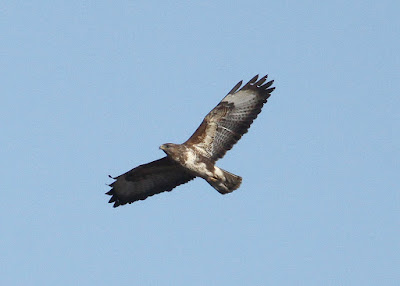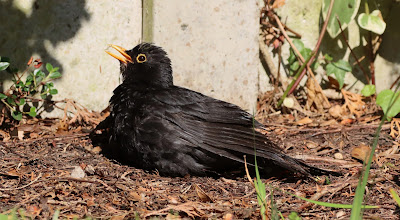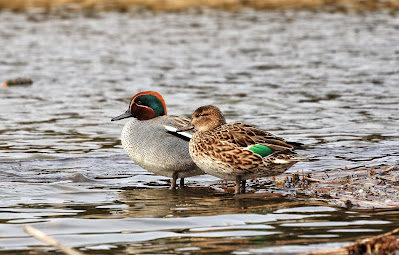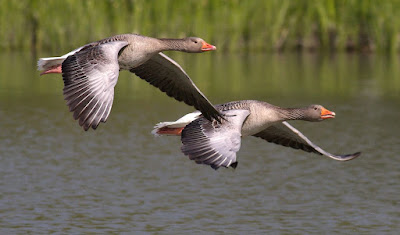Hi Folks. Yes, Susie and I are back from Greece sporting sun tans but very few
bird photos, a tale for another occasion.
DPD knocked at the door. My friends at
Princeton posted a book for review, The Bird Photographer of the Year,
Collection 9.
I discovered that the parcel had arrived a week after official
launch date of 24 September and that news about the book plus the name of this
year’s winner had featured in a number of daily newspapers and periodicals so as
to give sales a kick start across the globe. Therefore apologies to my
readers who may already know all about this book through reading Amateur
Photographer, The Daily Mail or The Times! Maybe even via Positive News, a
website devoted to helping more people to get a balanced and uplifting view of
the world?
The Bird Photographer of the Year, Collection 9 is a competition that
celebrates bird photography from around the world and as the sub-title explains
this is the ninth iteration. As might be expected this is a large format book of
landscape size 11.25 x 9 inches, a perfect visual aspect that displays to best
advantage the many wonderful digital images therein.
Bird Photographer of the Year - Princeton
As someone who claims to be
a bird photographer but whose non-inclusion in the book came as no surprise, I
took great interest in the images, keen to find out how the photographers
acquired the many splendid, stunning images laid out before me. I wanted too the
vital technical information of the lenses, cameras and the nitty-gritty of f
numbers, ISOs and exposure compensations that camera geeks crave.
This book
features only the best of tens of thousands of images, including the winning and
short-listed pictures of those submitted. It presents a vast variety of photos
by experienced professionals and enthusiastic amateurs alike, reflecting the
huge diversity and numbers of bird and nature lovers across the world. Most if
not all of the entrants prove that the best images are won by investing in
very expensive equipment; however those setting out in pursuit of birds with
slightly less costly equipment should not be discouraged but instead take heart and advice from the stories
here that luck, perseverance, timing and field craft are vital elements in taking that extra special picture.
The competition divides into categories, a
good way of allowing differing specialisms to make their mark. Hence there is
Bird Behaviour, Conservation, Birds in Flight, Urban Birds, Young Bird
Photographer of the Year, and even a Comedy Bird, etc, etc. - 8 Categories and 3
Special Awards.
Categories - Bird Photographer of the Year - Princeton
Comedy Award - Bird Photographer of the Year - Princeton
Many of the images can be viewed at Princeton via “look inside”.
Bird Photographer of the Year - Princeton
Tough Fight - Bird Photographer of the Year - Princeton
Cock of the Rocks - Bird Photographer of the Year - Princeton
The images here are more than acceptable from the point of view of
promoting the book but do not approach the hard copy here in front of me or
the copy you will buy after reading this review. The examples on the web are
chosen to give a flavour only of the book, the images in the book the cream of
the crop.
There are many images which are indescribably fantastic and stunning –
Bird with Attitude Takes a Walk on the Beach (Peregrine), Oystercatcher Graces
the Arctic Sky (a beautiful photo from a drone), Air Traffic Chaos at A
Gannetry, or Slow Glider (Northern Harrier). But I challenge anyone to find one
image alone above so many others that they could categorically state their
choice the best. It is all down to personal choice and a buyer's own bird specialism.
Bird Photographer of the Year - Princeton
Bird Photographer of the Year - Princeton
Bird Photographer of the Year - Princeton
It is instructive to read a particular photographer's
notes on the day of each photo and also to scrutinise the technical data of the
actual photos. The latter can only serve to help less experienced picture takers
with their choice of camera, lenses and settings. Perhaps too, less experienced
toggers will learn something useful from the notes about the use of field craft,
bird empathy and bird behaviour before trotting off into the wild on their
new found hobby.
And the Winner Is - When Worlds Collide’ by Patricia Homonylo.
A striking image showing over 4,000 birds that died colliding with windows in
Toronto. “Each year, more than one billion birds die in North America alone due
to collisions with windows,” says Homonylo. “I am a conservation photojournalist
and have been with the Fatal Light Awareness Program (FLAP) working to save
window-collision survivors. Sadly, most of the birds we find are already dead.”
When Worlds Collide’ by Patricia Homonylo - Bird Photographer of the Year - Princeton
The organisation collected the birds and at the end of the year and
created the startling display to increase public awareness. Reflected light
poses a severe threat to birds. To a bird, a reflective surface like a window
can appear to be a continuation of the landscape that is behind them.
Consequently, birds may fly straight into windows at full speed.
The winning
photograph is not my particular favourite however I do agree it sends an
important message about how the modern world sees birds as collateral damage of
the New World Order.
I was blown away by Bird Photographer of the Year. Collection 9. It is
not simply “photography.” It is art via photography, art to make you stare in
wonder, art to make you blink in awe at the scene and marvel at the skill
employed in capturing the split second.
A portion of profits from this book
goes to Birds on the Brink, a charity that supports bird conservation around the
world. Please buy this book I guarantee you will be delighted and inspired
alike.
At £30/$35 this is another Princeton Bargain Buy.
Price: $35.00/£30.00
ISBN:9780691263595
Published:Sep 24, 2024
Pages: 256
Size: 11.25 x 9 in.
`

















































.jpg)


.jpg)













.jpg)












